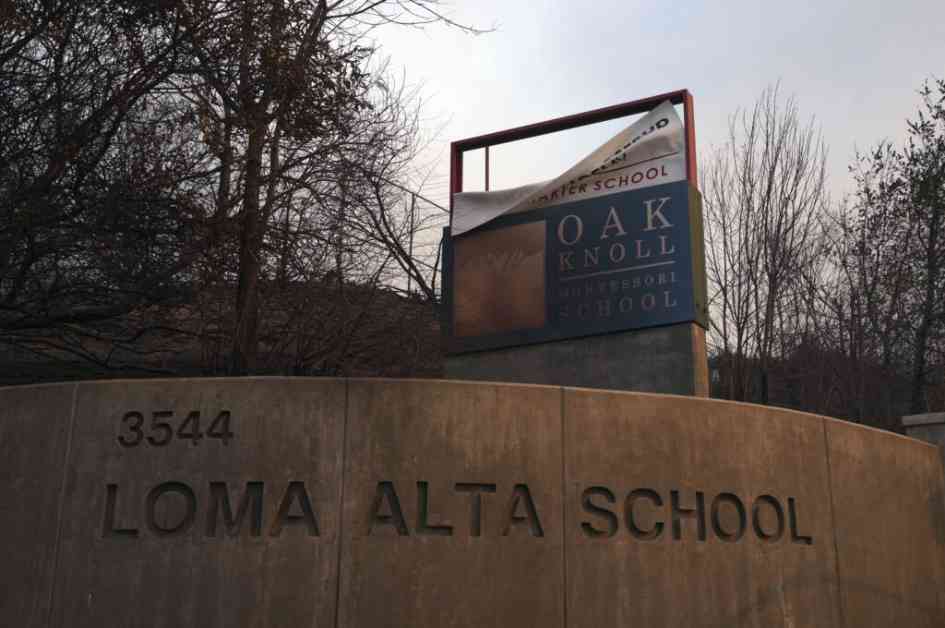As Gov. Gavin Newsom stood near a burned-down school in the aftermath of the Los Angeles fires, the heart-wrenching plea of a Pacific Palisades mom, Rachel Darvish, echoed through the charred remains: “That was my daughter’s school, what are you going to do?” Newsom, faced with the raw emotion of a distraught parent, offered no immediate answers.
However, what Newsom should have addressed is the urgent need for emergency education savings accounts for all families impacted by the devastating fires in Los Angeles. These families not only lost their homes and businesses but also witnessed their neighborhood schools reduced to ashes. Reports suggest that over a dozen schools in the Los Angeles area have been destroyed, leaving more than 5,700 students without a place to learn.
In the Altadena region, a community ravaged by the Eaton fire, nearly 2,000 students find themselves without a school to call their own. The impact of this loss is palpable, as shared by one 7-year-old girl from Altadena who tearfully expressed her love for her now-destroyed school to a CBS-TV reporter. A mother from the same area emphasized the crucial role schools play in the daily fabric of family life, now disrupted and uncertain.
Rebuilding schools, much like rebuilding homes, is a daunting task that demands time, resources, and significant financial investments. Shockingly, only a fraction of Newsom’s wildfire relief bill was allocated toward school reconstruction, leaving affected families in limbo. The extensive process of rebuilding a school, lasting two years or more, coupled with the staggering costs ranging from $70 million to $100 million per school, highlights the pressing need for immediate solutions.
In the wake of the fires, many families have been displaced across Southern California and beyond, awaiting the reconstruction of their homes. As these families navigate this period of uncertainty, providing each child impacted by the fires with publicly funded education savings accounts could offer a lifeline. Education savings accounts, pioneered by states like Arizona, empower parents to access government-authorized funds for a variety of educational purposes, from tuition to tutoring, therapies, and more.
Drawing inspiration from Arizona’s successful model, California could allocate a portion of its education budget to provide around $12,800 per affected child for these savings accounts. With thousands of students in need, the overall cost of implementing such a program would be a fraction of the aid being discussed for other recovery efforts. The popularity of education savings accounts among parents underscores the potential impact and importance of this initiative in supporting fire-affected families.
Moreover, safeguarding public schools’ financial stability during the implementation of these accounts is crucial, ensuring that districts continue to receive their regular funding. By leveraging federal aid and potentially garnering support from the federal government, education savings accounts could offer a sustainable solution to address the immediate educational needs of families grappling with the aftermath of the fires.
As we navigate the aftermath of the Los Angeles fires, the urgency of providing families with the tools and resources to make informed educational choices for their children cannot be overstated. The flexibility and freedom offered by education savings accounts can empower parents to tailor their children’s education to suit their individual needs, ensuring continuity and stability during a time of great upheaval.
In the spirit of National School Choice Week, let us rally behind fire-affected families in Los Angeles, offering them the educational freedom and flexibility they deserve in these challenging times.
As Lance Izumi, senior director of the Center for Education at the Pacific Research Institute, rightly points out, the road ahead must involve a reevaluation of the education savings account program to enhance its effectiveness and address evolving needs. In the face of uncertainty, one thing remains certain: the resilience of families and the power of education to provide a beacon of hope in the darkest of times.
